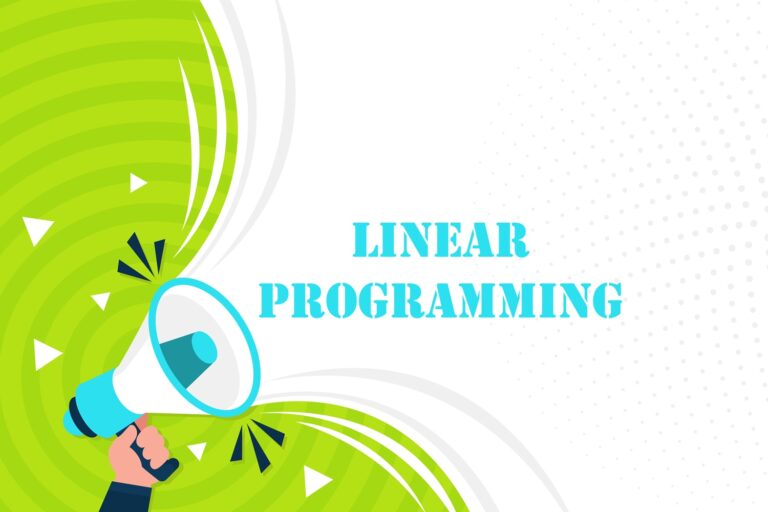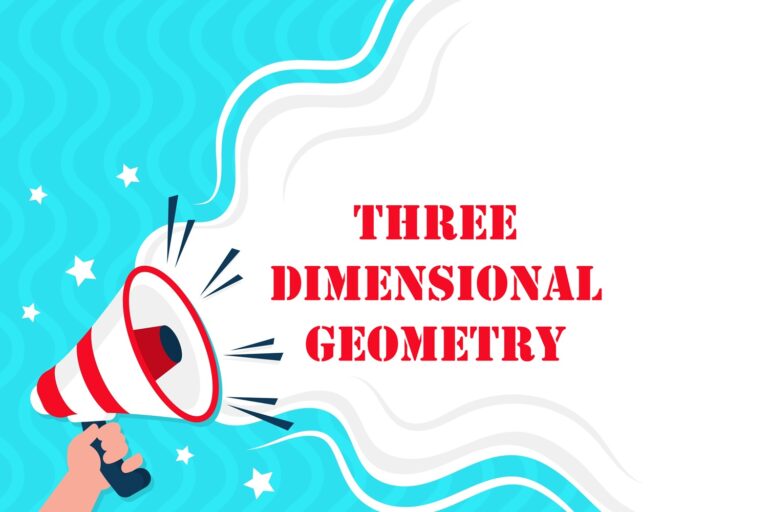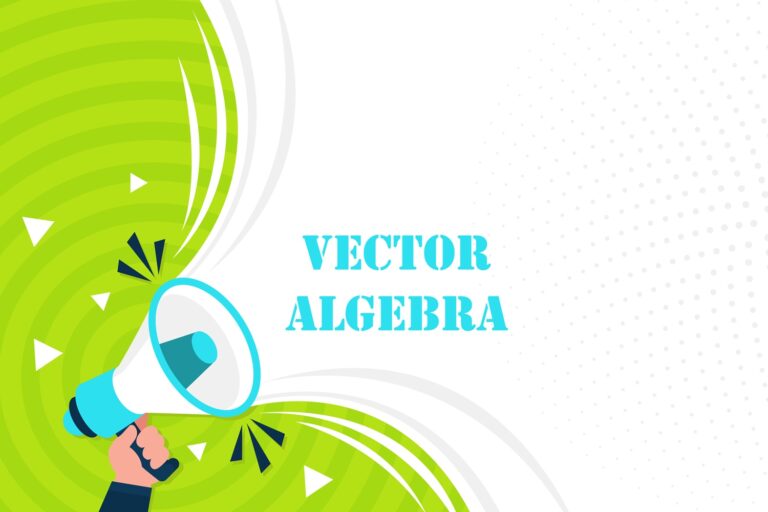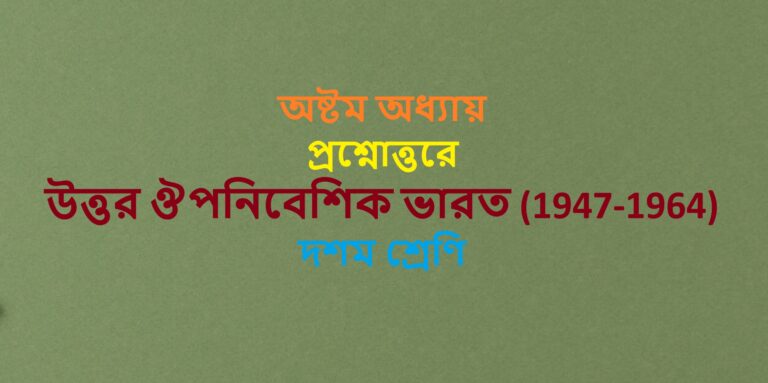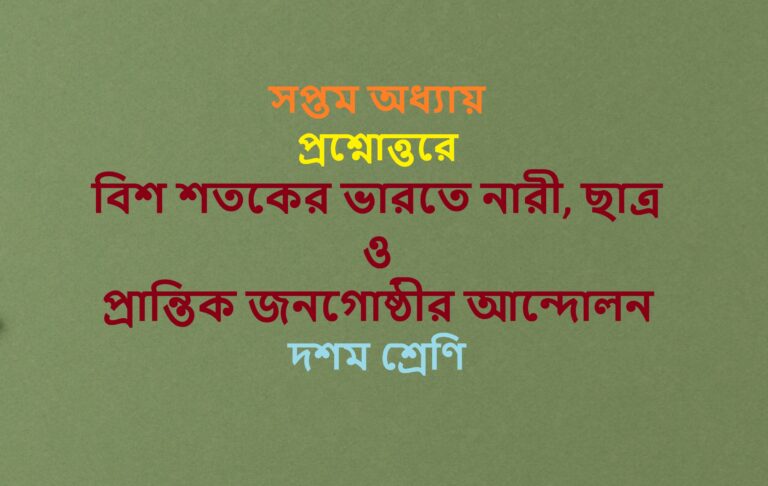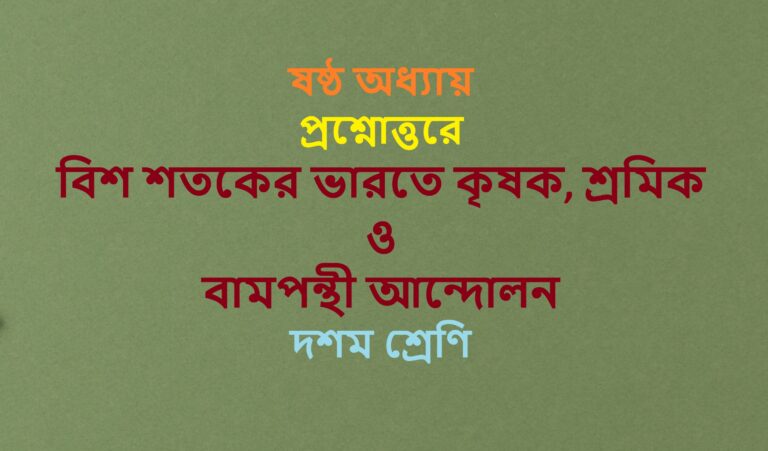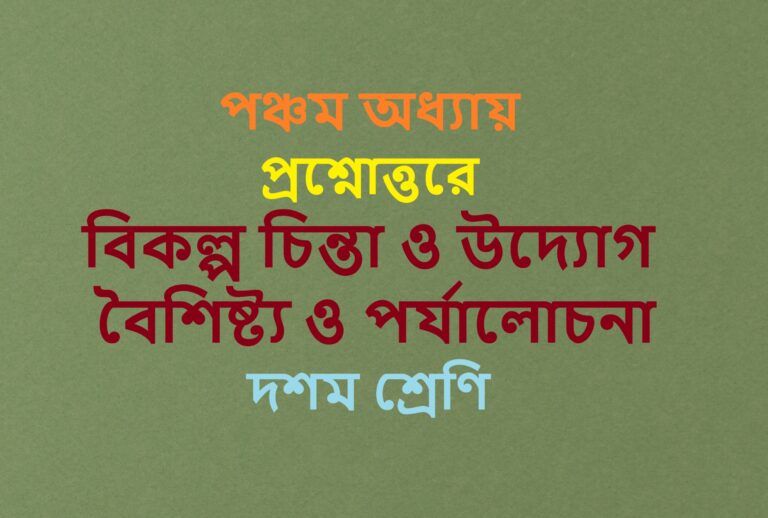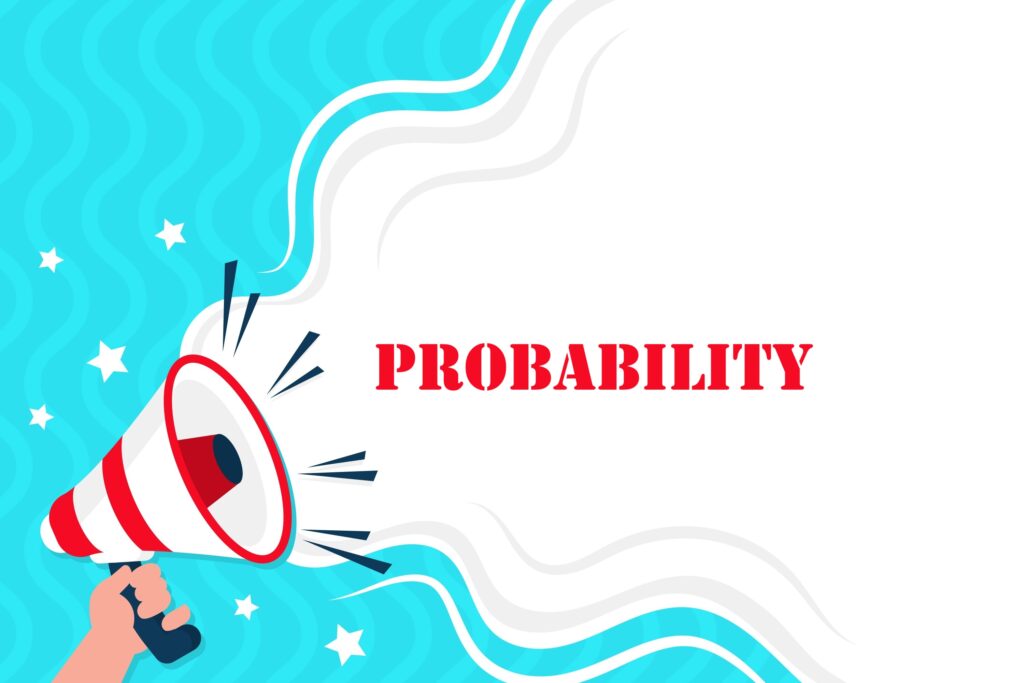
Probability
PROBABILITY
There are two types of experiments:
In this chapter, the term experiment will stand for random experiment.

If P(A) > P(B) then event A is more likely to occur than event B.
If P(A) = P(B) then events A and B are equally likely to occur.
A pack of playing cards consist of 52 cards which are divided into 4 suits of 13 cards each. Each suit consists of one ace, one king, one queen, one jack and 9 other cards numbered from 2 to 10. Four suits are named as spades, hearts, diamonds and clubs.

King, queen and jack are face cards.


Here, ‘measure’ may denote length, area or volume of the region or space.
Important Questions
Multiple Choice questions-
1. If P(A) = 12, P(B) = 0, then P (A/B) is
(a) 0
(b) 12
(c) not defined
(d) 1.
2. If A and B are events such that P (A/B) = P(B/A), then
(a) A ⊂ B but A ≠ B
(b) A = B
(c) A ∩ B = ø
(d) P (A) = P (B).
3. The probability of obtaining an even prime number on each die when a pair of dice is rolled is
(a) 0
(b) 13
(c) 112
(d) 136
4. Two events A and B are said to be independent if:
(a) A and B are mutually exclusive
(b) P (A’B’) = [1 – P(A)] [1 – P(B)]
(c) P (A) = P (B)
(d) P (A) + P (B) = 1.
5. Probability that A speaks truth is 45. A coin is tossed. A reports that a head appears. The probability that actually there was head is:
(a) 45
(b) 12
(c) 15
(d) 25
6. If A and B are two events such that A ⊂ B and P (B) ≠ 0, then which of the following is correct
(a) P (A / B) = p(B)p(A)
(b) P (A/B) < P (A)
(c) P (A/B) ≥ P (A)
(d) None of these.
7. If A and B are two events such that P (A) ≠ 0 and P (B/A) = 1, then
(a) A ⊂ B
(b) B ⊂ A
(c) B = ø
(d) A = ø
8. If P (A/B) > P (A), then which of the following is correct?
(a) P (B/A) < P (B)
(b) P (A ∩ B) < P (A).P(B)
(c) P (B/A) > P (B)
(d) P (B/A) = P (B).
9. If A and B are any two events such that
P (A) + P (B) – P (A and B) = P (A), then:
(a) P (B/A) = 1
(b) P (A/B) = 1
(c) P (B/A) = 0
(d) P (A/B) = 0
10. Suppose that two cards are drawn at random from a deck of cards. Let X be the number of aces obtained. What is the value of E (X)?
(a) 37221
(b) 513
(c) 113
(d) 213
Very Short Questions:
B: “The card drawn is an ace.” (N.C.E.R.T.)
B: “The card drawn is a king.” (.N.C.E.R.T.)
Short Questions:
Find the probability that the balls drawn are one white and one red. (C.B.S.E. 2019 C)
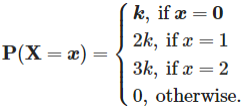
Determine the value of ‘P. (Outside Delhi 2019)
Long Questions:
Case Study Questions:
1. In an office three employees Vinay, Sonia and Iqbal process incoming copies of a certain form. Vinay process 50% of the forms, Sonia processes 20% and Iqbal the remaining 30% of the forms. Vinay has an error rate of 0.06, Sonia has an error rate of 0.04 and Iqbal has an error rate of 0.03.

Based on the above information, answer the following questions.
![]()
2. Between students of class XII of two schools A and B basketball match is organised. For which, a team from each school is chosen, say T1 be the team of school A and T2 be the team of school B. These teams have to play two games against each other. It is assumed that the outcomes of the two games are independent. The probability of T1 winning, rawmg an osrng a game against T2 are 12 , 310and 15 respectively.
Each team gets 2 points for a win, 1 point for a draw and 0 point for a loss in a game.
Let X and Y denote the total points scored by team A and B respectively, after two games.
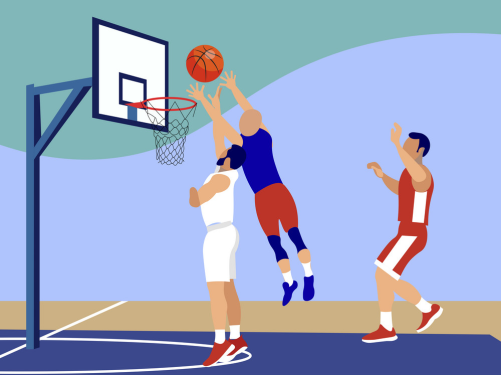
Based on the above information, answer the following questions.



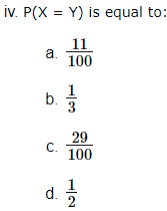

Answer Key-
Multiple Choice questions-
Very Short Answer:
Since A and B are independent events, [Given]
.-. P (A ∩ B) = P (A) . P(B) …(1)
Now P(A’∩B) = P (B) – P (A ∩ B)
= P(B) – P (A) P( ∩ B) [Using (1)]
= (1 – P(A)) P(B) = P(A’) P(B).
Hence, A’ and B are independent events.
(a) P(A) = 1352 = 14, P(B) = 452 = 113
P(A∩B) = 152 = 14⋅ 113 = p(A).p(B)
Hence, the events A and B are independent
(b) P(A) = 2652 = 12, P(B) = 452 = 113
P(A∩B) = 252 = 126 = 12⋅ 113 = P(A) . P(B)
Hence, the events A and B are independent
S, Sample space = {HH, HT, TH, TT}
where H ≡ Head and T ≡ Tail.
∴ P (at least one head) = 34.
We have: P(A/B) = 0.3
P(A∩B)P(B) = 0.3
P(A∩B)0.5 = 0.3
P (A ∩ B) = 0.5 x 0.3 = 0.15.
Now, P(A∪B) = P(A) + P(B) –P(A ∩ B)
= 0.6 + 0.5 – 0. 15
Hence, P (A ∪ B) = 1.1 – 0.15 = 0.95.
P (Red transferred and red drawn or black transferred red drawn)
![]()
![]()
Solution:
![]()
P(A∪B) = P(A) + P(B) – (A ∩ B)
![]()
Short Answer:
We have:
P(A)= 0.3 and P(B) = 0.5.
Now P (A ∩ B) = P(A). P(B)
[∵A and B are independent events]
= (0.3) (0.5) = 0.15.
![]()
Reqd. probability
= P (White, Red) + P (Red, White)
![]()

Probability that the problem is solved
= Probability that the problem is solved by at least one person
![]()
![]()
Here, A: number is even i.e.,
A = {2,4,6}
and B: number is red i.e.,
B = {1,2,3}
![]()
And,
P (A ∩ B) = P(Number is even and red) = 16.
Thus, P (A ∩ B) ≠ P(A). P(B)
![]()
Hence, the events A and B are not independent.
Probability of getting an odd number is one 3 1
![]()
Probability of getting an even number in one 3
![]()
Also, n = 6.
(i) P (5 successes) = P(5) = 6C5 q1 p5
(ii) P (at most 5 successes)
= P (0) + P(1) + … + P(5) = 1 – P(6)
= 1 – 6C6 q0 p6
![]()
We have: P (X = 0) + P (X = 1) + P (X = 2) = 1
⇒ k + 2k + 3k = 1
⇒ 6k = 1.
![]()
![]()
![]()
Let the events be as :
A: Card bears an odd number.
B: Number on the card is greater than 5.
A∩B = {7, 9, 11}.
![]()
![]()
Long Answer:
Let the events be as:
E: Sum of numbers is 8
F: Number of red dice less than 4.
E: {(2, 6), (3, 5), (4, 4), (5, 3), (6, 2)}
F = {(1, 1), (2, 1), … (6, 1), (1, 2), (2, 2), … (6, 2), (1, 3), (2, 3), … (6, 2) (6, 3)}
and E ∩ F = {(5, 3), (6, 2)}
![]()
![]()
![]()
![]()
The first five positive integers are 1, 2, 3, 4 and 5.
We select two positive numbers in 5 x 4 = 20 way.
Out of three, two numbers are selected at ran-dom.
Let ‘X’ denote the larger of the two numbers.
X can be 2, 3, 4 or 5.
∴ P (X = 2) = P (Larger number is 2)
{(1, 2), (2,1)} = 220
Similarly, P (X = 3) = 420,
P (X = 4) = 620
and P (X = 5) = 820
Hence, the probability distribution is:
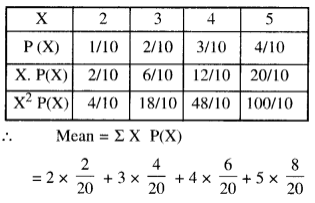
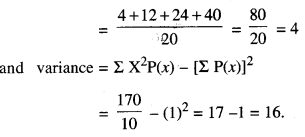
We have: P(A) = Probability of student A coming to school in time = 37
P(B) = Probability of student B coming to school in time = 57
![]()
![]()
∴ Probability that only one of the students coming to school in time

![]()
![]()
![]()
![]()
![]()
![]()
∴ P(Agree) = P(Both speak the truth or both tell a lie)
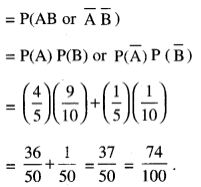
Hence, the reqd. percentage = 74%.
Case Study Answers:
1. Answer :
Let A be the event of commiting an error and E1, E2 and E3 be the events that Vinay, Sonia and Iqbal processed the form.
Solution:
Required probability = P(A|E2)\
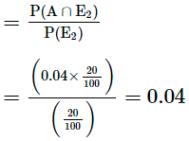
Solution:
Required probability = P(A ∩ E2)
![]()
Solution:
Total probability is given by
P(A) = P(E1) × P(A|E1) + P(E2) × P(A|E2) + P(E3) × P(A|E3).

Solution:
Using Bayes’ theorem, we have

Solution:

2. Answer :
Solution:
Clearly, P(T2 winning a match against T1)
= P(T1 losing) = 15
Solution:
Clearly, P(T2 drawing a match against T1)
= P(T1 drawing) = 310
Solution:
According to given information, we have the following possibilities for the values of X and Y.
|
X |
4 |
3 |
2 |
1 |
0 |
|
Y |
0 |
1 |
2 |
3 |
4 |
Now, P(X > Y) = P(X = 4, Y = 0) + P(X = 3, Y = 1)
= P(T1 win) P(T1 win) + P(T1 win) P(match draw) + P(match draw) P(T1 win)

Solution:
P(X = Y) = P(X = 2, Y = 2)
= P(T1 win) P(T2 win) + P(T2 win) P(T1 win) + P(match draw) P(match draw)

Solution:
From the given information, it is clear that maximum sum of X and Y can be 4, therefore P(X + Y = 8) = 0.
